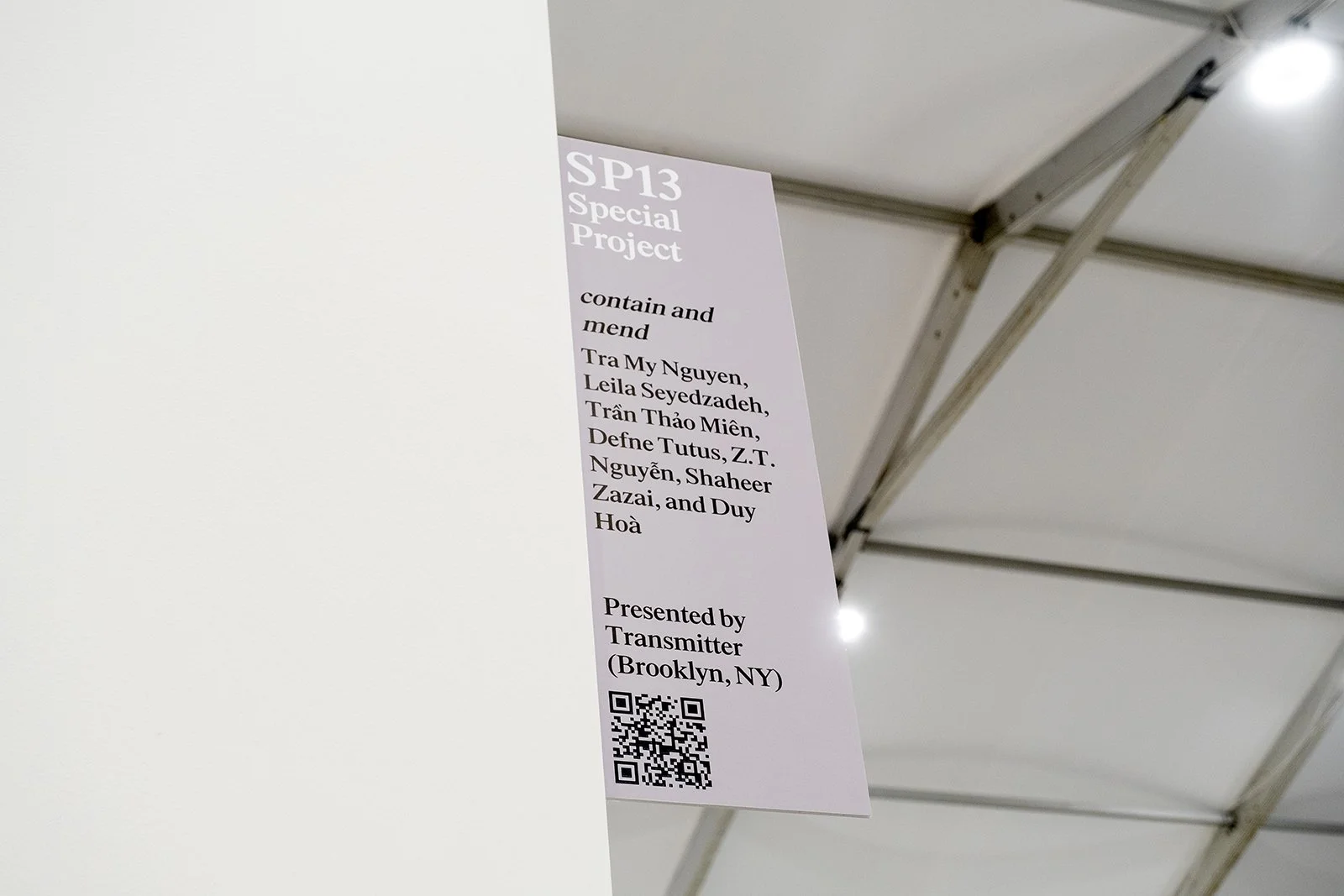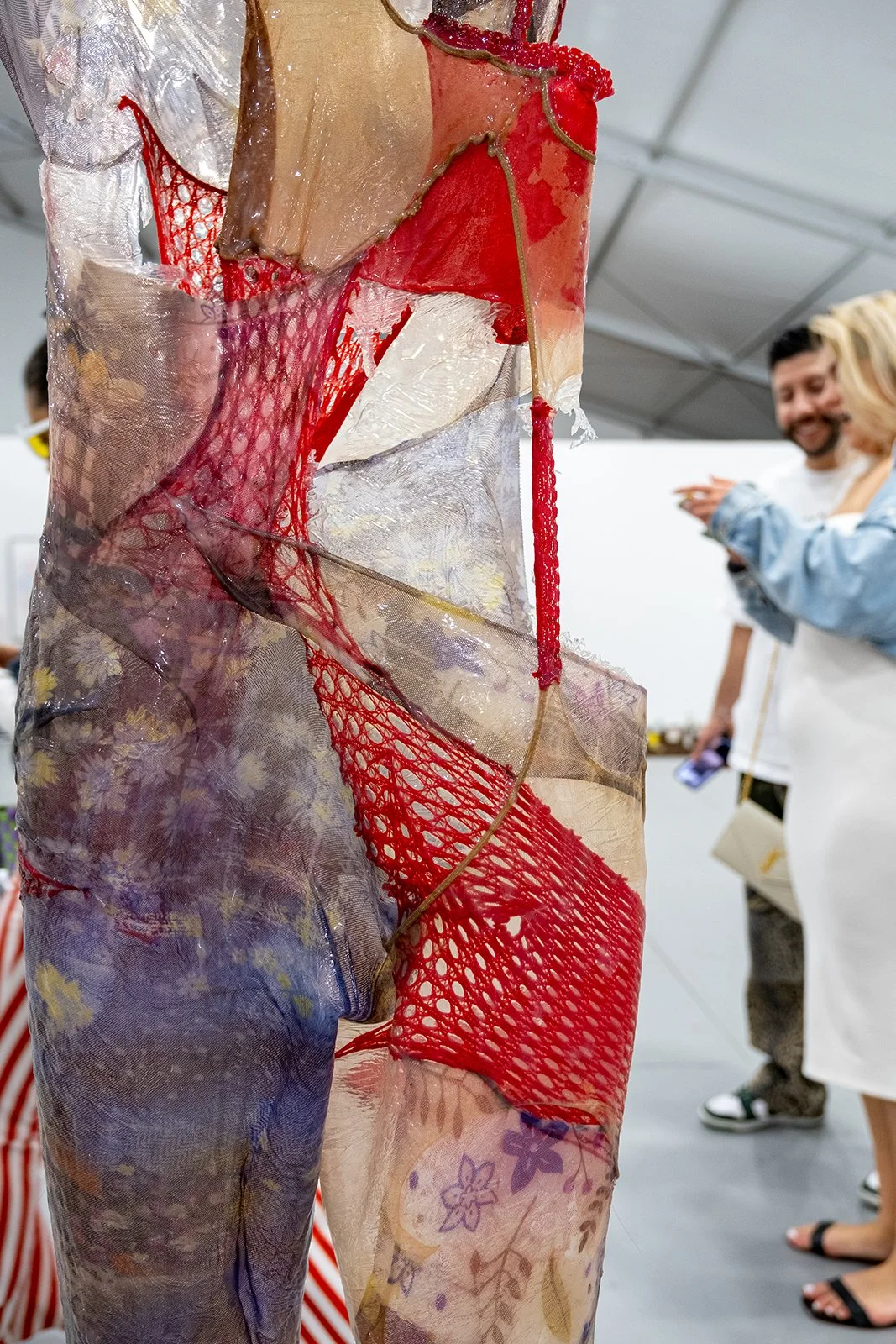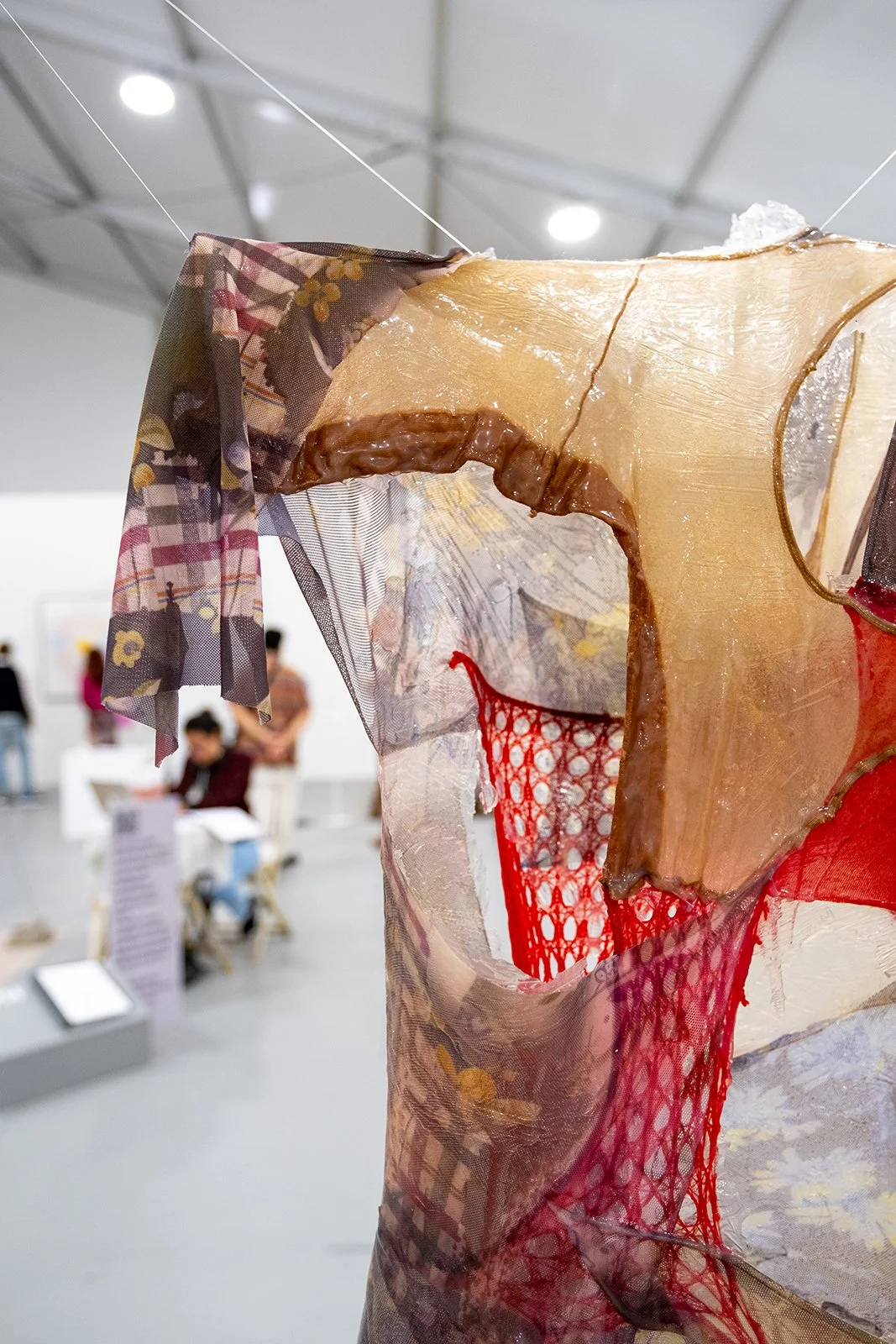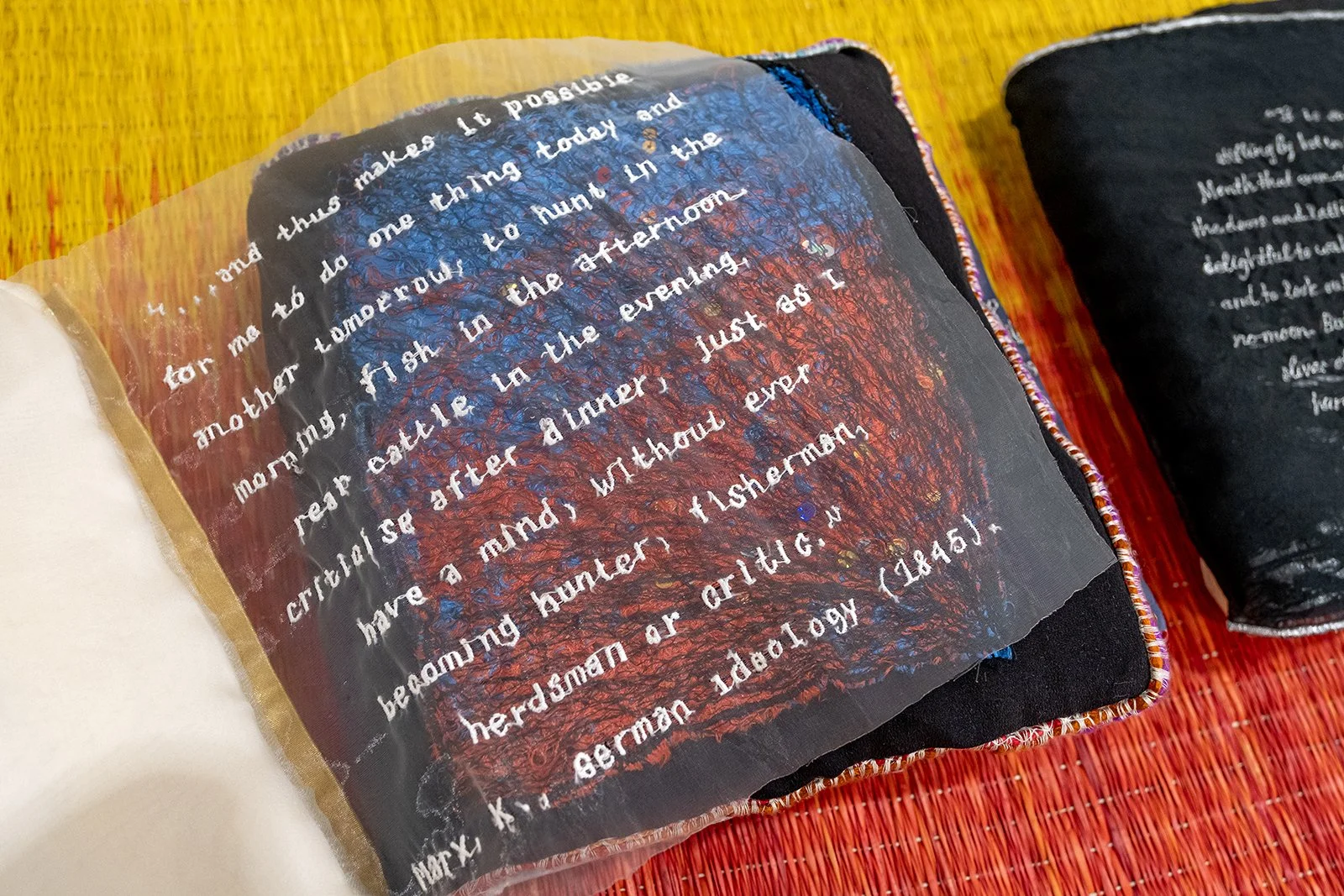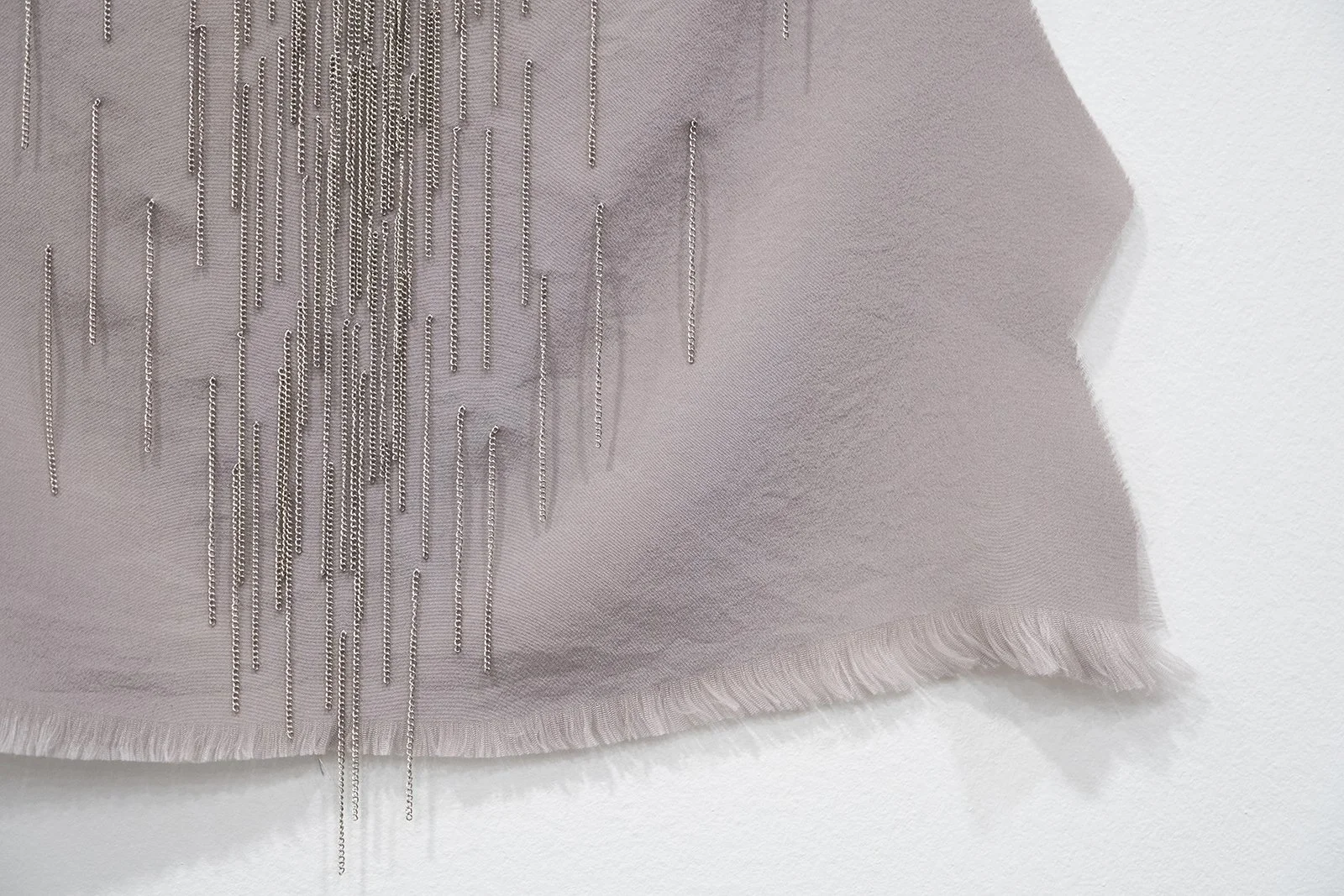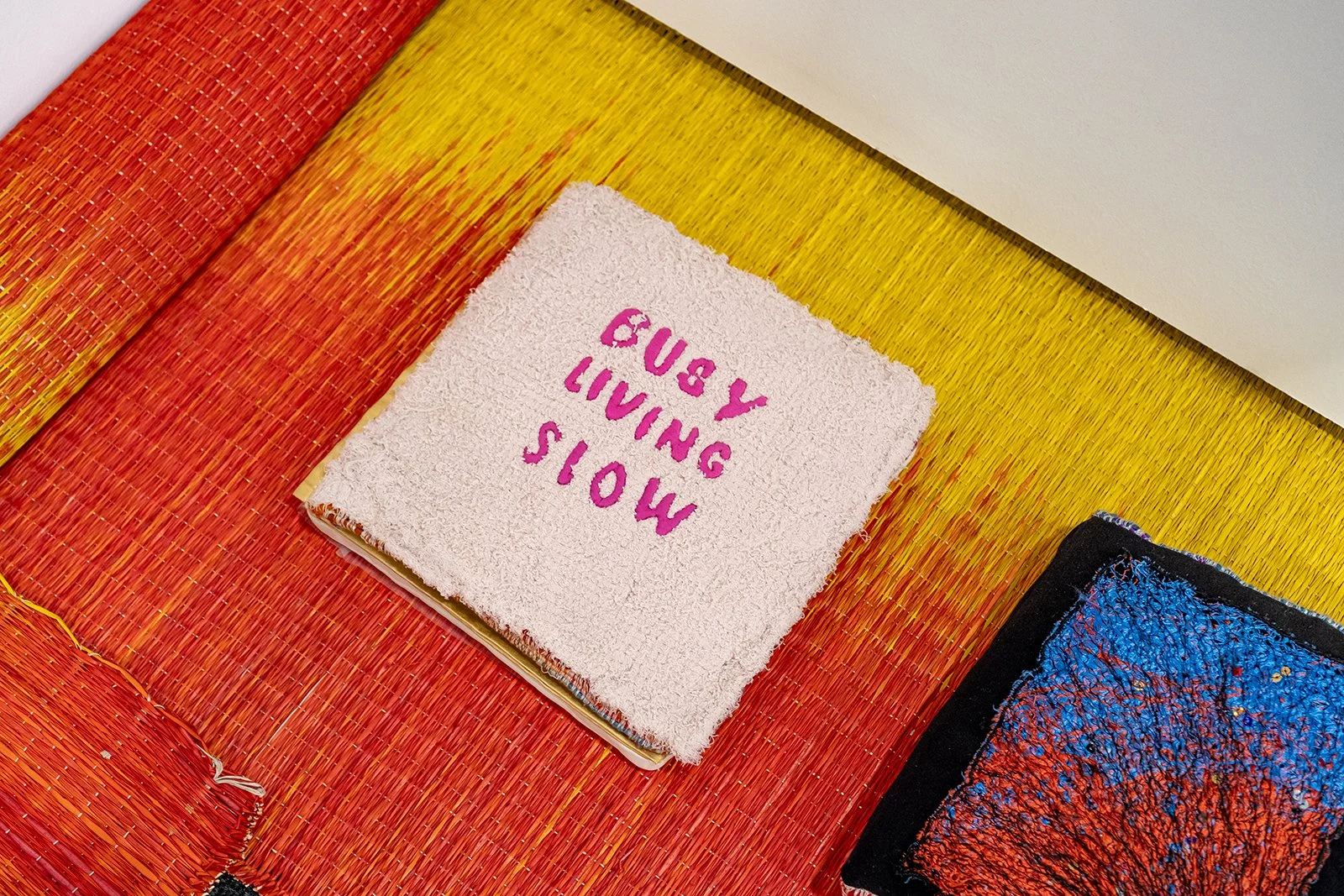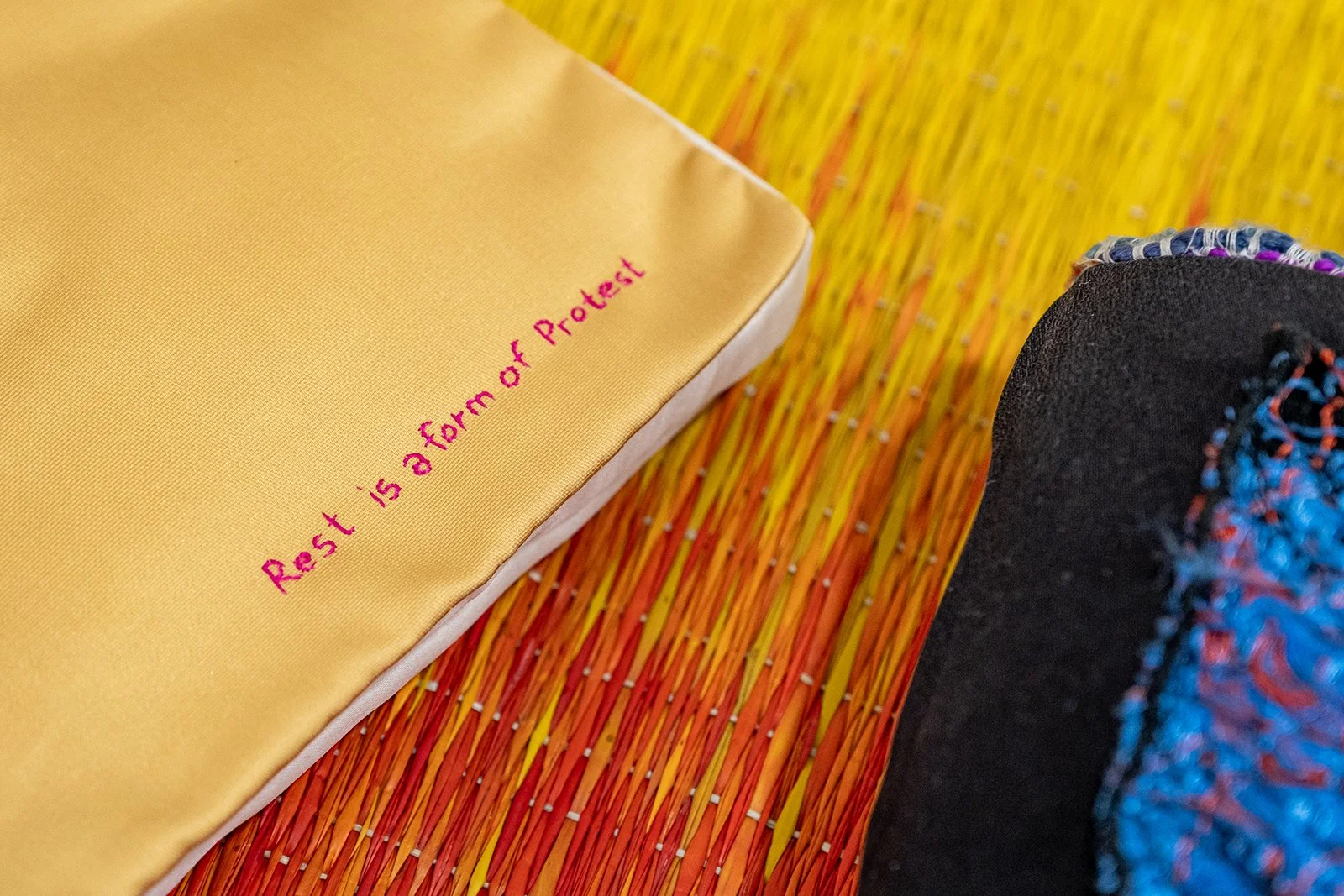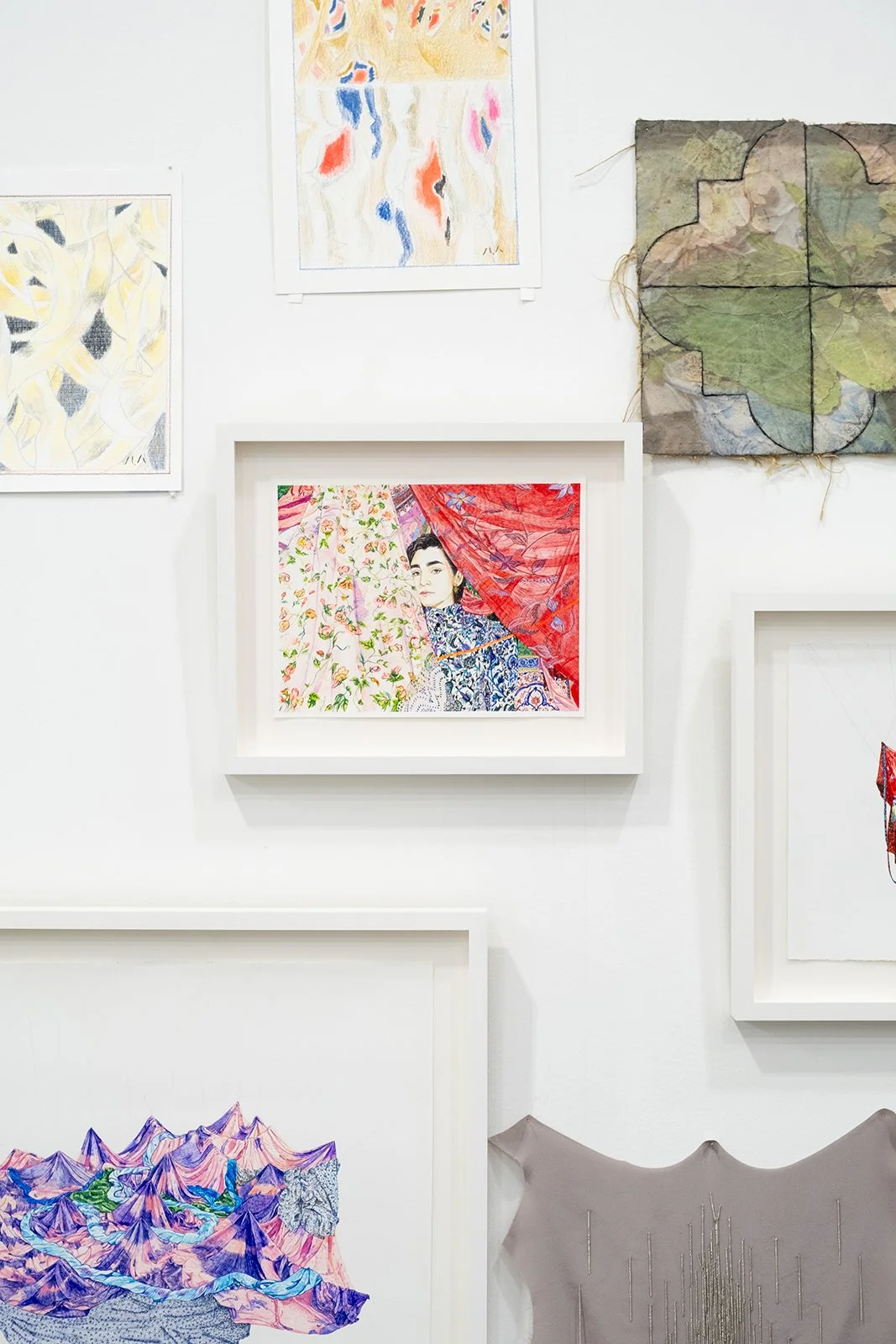Transmitter is proud to present:
contain and mend
Dec 4 – 8th, 2024
Untitled Art Miami Beach
Special Projects Booth SP13
1200 Ocean Dr, Miami Beach, FL
“Despite all our desperate, eternal attempts to separate, contain and mend, categories always leak.”
― Trinh T. Minh-ha, Woman, Native, Other: Writing Postcoloniality and Feminism
Photography by Chanel Matsunami @chanelmatsunami / @gidrastudios
Transmitter is proud to present contain and mend, a group exhibition of work by artists Tra My Nguyen, Leila Seyedzadeh, Trần Thảo Miên, Defne Tutus, Z.T. Nguyễn, Shaheer Zazai, and Duy Hoà, for Untitled Art Miami Beach in the “Special Projects” sector. Responding to Untitled’s 2024 curatorial focus of “East Meets West,” the group presentation draws inspiration from postcolonial theorist Trinh T. Minh-ha to challenge traditional categories of “East” or “Asian,” especially proposing expansive definitions inclusive of Southeast and Southwest Asia. Further referencing the fluid nature of identity and resistance to stasis, the works on display will rotate throughout the fair, each day featuring a new selection of works. These seven artists—all with rigorous multimedia and interdisciplinary practices—draw from highly personal material cultures as the throughline of connected human experience.
Tra My Nguyen’s soft sculpture series Bodies (2024) consist of mesh fabric, silicone, and hosieries, where the silicone figures serve as both clothing and human-like forms. These sculptures blend social and mechanical elements, reflecting textile production and labor migration. Symbolizing posthuman assemblages, they highlight the exploitation of women and migrant labor in technology and fashion production, especially where the exploited bodies are rendered invisible and ultimately automated away. Nguyen’s suspended sculptures summon issues of authorship and the appropriation of creative labor, especially from BIPOC artists and designers, as well as the opacity of foreign manufacturing to American consumers writ large, referencing histories of Asian garment production and extractive labor practices therein.
Leila Seyedzadeh’s works serve as tapestries woven from fragments of memories, evoking a sense of placelessness. Seyedzadeh blurs geographical boundaries, inviting viewers on a journey of introspection, The work of exploring imaginary landscapes drawn from her subconscious, focusing on natural elements like mountains and rivers. Influenced by traditional Persian miniature paintings, her practice has evolved from mimetic landscapes to abstract interpretations. The first is a framed textile piece that represents an important departure for her work as she combines both termeh cloth with pieces of woven photographs and her hand-written poetry. It's the first work of its kind since she is primarily known for her large-scale fabric installations, pen drawings on paper, and textile paintings. The second work is from her textile painting series. She creates formal compositions with shape and color through fabric--essentially approaching these textile works as a painter would a painting. The base fabric of this particular piece was hand-dyed (a technique she learned from her mother), she then added other elements (found fabrics, ribbons, and the fringe) to create her iconic mountainscapes.
From the bustling fashion scenes of London and Hanoi to the serene path of solo travel spanning Iran to Timor-Leste, since 2016, artist Trần Thảo Miên has been embracing the ethos of "Busy Living Slow." In a world of fast-paced art industry, they have turned to socialist ideologies of work and the timeless wisdom of Sei Shonagon’s The Pillow Book. Miên’s floor installations Have a Good Rest (2024) and Ngu chua? Ngu trua! (Lunch nap? Lunch nap!) (2024) consist of textile books as pillows, made from fashion waste, intricately embroidered with passages from critical texts, poems, and even a QR code to Stanford University’s article “Philosophical Approaches to Work and Labor.” Inviting visitors to pause, sit, or lay on Vietnamese straw mats while viewing the work, these installations are the artist’s ode to unrushed living, and the power of rest as both rejuvenation and resistance. “Lay your head on my pillow book,” Miên beckons. “Rest as you protest.”
Defne Tutus uses the power of ornament to transform familiar materials into protective constructions that guard the body from the dangers and violence of the world. Humans are swaddled in fabric from the moment they are born and Tutus believes that such intimate closeness and dependence throughout a lifetime inures the wearer to the textiles’ magic, power, and beauty. The familiarity and ubiquity of cloth in people’s understanding of the world gives textiles a unique ability to activate untapped layers of memory and emotion as well as to communicate meaningful knowledge of individuals’ connections to one another and each other’s place in the world. Using materials such as fiber, beads, rocks, metal, plastic, and hair, together through textile-making techniques, Tutus creates intricate pieces meant to be worn and that echo the labors of an absent body. She builds a panoply of garments that invoke guardianship and talismanic protection. Her necklaces are a natural tributary of her textile art practice. They emerge from the same impetus and encircle the body with amuletic intent.
Z.T. Nguyễn’s drawing practice considers the conceptual significance of potentiality—that is, the space located between stasis and change. Often set in the nighttime, their works offer moments of tension, contemplation, and longing, while also channeling fantasy and folklore. Nguyễn is interested in the role of potentiality in unpacking and understanding histories of refugeeism and migration, political upheaval, and sexuality. Their works call on atmospheres of domesticity, queer intimacy, and fragility, emphasized by the delicate, unadorned hangs on simple archival tabs. Lightly creased and constructed from 8.5 x11” sheets of paper for ease of transport, Nguyễn’s works are meant to be folded, packed, and carried: a further meditation on the immigrant experience, and the crossing of various physical and emotional thresholds.
In the Allow Me to Sow and See the Garden I Become series, Shaheer Zazai presents a body of work in which he continues to reflect on how his country of origin is perceived. Afghanistan has long been associated with ongoing war and conflict, to the exclusion of all other possible facets of its culture. Zazai’s digital creative process was first inspired by the fabrication of traditional Afghan rugs. His version involves translating hand-knotted threads on a loom into typed characters. The digital print compositions often reflect garden motifs: a central element, corridors, borders, and ponds reference Afghanistan’s strong gardening tradition. By focusing on the power of flowers and gardens, Zazai tries to activate the hope of transformation while allowing his studio to become a site for meditation and reparation.
A graduate of the National College of Art Education and Việt Nam Fine Arts University, Duy Hòa is among an emergent group of Vietnamese painters who have developed and stayed true to a distinct, dynamic visual lexicon of identity and home, through the interplay of figuration and abstraction. For his first presentation outside of Vietnam, Hòa displays paintings depicting the quiet ecology of outlying areas of Hà Nội, including his home in Đan Phượng District. “Through painting, I want to tell the stories from Hà Nội’s outlying areas,” Hòa has said of his works. “This is a broad topic with many of my memories of my homeland. These are field-stretching along the riverbank from Đan Phượng District to the end of Song Phương dyke.” Now over a decade into his career, Hòa’s symbolic paintings emphasize the relationships between landscape, memory, and identity, his works depicting quiet, internal topographies.
By highlighting recent works from emerging international artists, contain and mend emphasizes the instability of geographic, ethnic, and nationalist categories. Through porous, diaphanous, and textile-driven works that center the human body and its relationships to physical, external environments, the group presentation embraces the overhang or the excess material that evades neat dichotomies and dualisms, implicit in the endless attempts to separate humanity from one another: leaks and slippages will always continue.
For more information or an advanced checklist, please contact sofiathieud@gmail.com or lila.nazemian@gmail.com.


